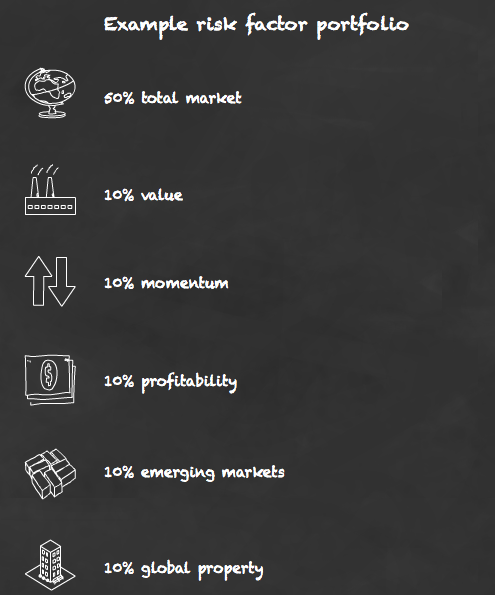Create your own Guaranteed Equity Bond
Post on: 24 Апрель, 2015 No Comment

I believe the simplest way to start investing is with a cheap and easy mix of cash and an index tracker.
Youll have seen the adverts:
Invest in the Filchet and Philander Guaranteed Equity Bond Issue Mark 4! Your capital is not at risk (unless the stock market drops by 32.5% between August 13th 2012 and January 22nd 2014) and after five years youll get 33% of the gain in the FTSE 100 index (unless its up over 75%, in which case youll get the 2/3 of any gain over 21% plus half the number you first thought of). You can cash in your bond-thingie at any time, provided its a third Friday of either April or October on every odd year from the day you bought the bond.
I exaggerate, but you get the picture. I dont like these guaranteed equity bonds (GEBs) for many reasons:
- Theyre opaque The average person doesnt know how they work, or why.
- Theyre a lie — Guaranteed, equity, and bond': Words chosen to reassure widows and the guardians of orphans, but these products are actually constructed out of derivatives and options! Hence the weird hurdles like the FTSE must be over 5223 on such a day, as well as extra counter-party risks .
- Theyre confusing While some of these so-called bonds may offer a good balance of risk versus reward, theyre invariably sold to people who couldnt tell. In fact, Ive never met a guaranteed equity bond owner who can explain to me what theyll get under what circumstances.
- Theyre expensive Not just in terms of the gains you give up for potential security of capital (which may be fair enough) but also the hidden fees rolled into their arcane structure.
- Theyre inherently flawed Most give you a return based on the value of the stock market on some particular day, or if youre lucky over the average of a few months. But stock markets are volatile. so ill-suited to this. Buying a product where the return is dependent on the level of the index over a few days in five years time is like choosing a spouse based on what you think youll get for Valentines Day in 2017. You might have five good years followed by a week long crash, yet still be forced to cash out.
People are drawn to these bonds, though, and itd be arrogant of me to dismiss that. The urge for capital protection is strong, rightly or wrongly.
And when its money someone may get just once in his or her lifetime perhaps an inheritance, or a redundancy payout who am I to tell them they should be braver with the stock market?
Instead, Ill tell you a neat way to get capital protection, while still getting the chance to make money from a rising stock market.
How to roll your own Guaranteed Equity Bond

What Im going to suggest isnt rocket science.
Guaranteed equity bonds promise to return the sum of money you put into them (ignoring inflation). But you can use cash savings and a stock market tracker fund plus a calculator to create the equivalent of a guaranteed equity bond, provided youre not investing vast amounts of money. 1
Your DIY guaranteed equity bond consists of two parts:
Part A: Sufficient cash in a fixed rate savings ISA
This is the component that guarantees you get your capital back. Out of your lump sum investment, you put enough cash into the ISA so that when the compound interest is rolled up youre left with the same lump sum that you started with.
Part B: Invest the rest in an index fund
The money left over goes into a stock market index fund. Whatever the stock market does over the period, thats your return on your lump sum.
A worked example
Lets say you have £5,000 to invest for five years. The two steps are:
- Part A Work out how much of the £5,000 to save as cash
- Part B Invest whatever is leftover from that in the stock market
Part A: The cash component
Suppose the best five-year fixed ISA savings rate you can find pays 5%.
You can either use maths to work out how much youll need to put aside in cash to ensure you have £5,000 left at the end, or you can do what Id do and simply play with the Monevator compound interest calculator to find the right amount by guesswork:
In this example, the number of years is 5, the amount added each year is 0, and the interest rate is 5. Put your guesses into Initial Amount until the Result is £5,000. (If Result is more than £5K, lower the initial amount, and if its less than £5K, raise it until its as close as can be).
Through trial and error you should soon find that an initial sum of £3,918 saved at 5% will give you £5,000 (and 14p) in five years time.
That is your part A. You put £3,918 into the ISA and let it compound for five years, and get your £5,000 back in five years time.
Part B: Investing the rest in a tracker fund
The leftover money that you dont need to save as cash £1,082 in this example goes into part B, a stock market index fund.
You want to choose the cheapest index fund you can find to keep costs ultra-low. Your best bet as I write would probably be the HSBC All-Share Index Fund, which has no initial fee and charges just 0.27% a year.
Choose the accumulation option so you automatically reinvest the 3% or so in dividends youre due back into the fund each year.
Returns from the DIY pseudo-GEB
Heres a few examples of how your returns could pan out, depending on how the stock market performs over the five-year period.














